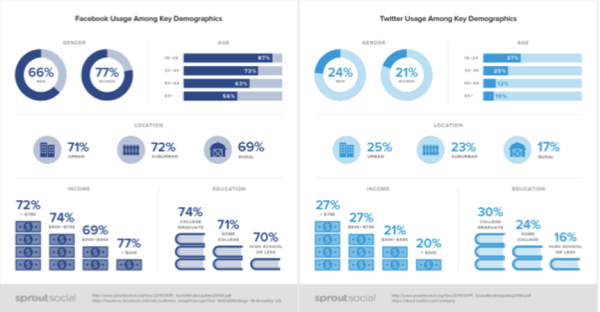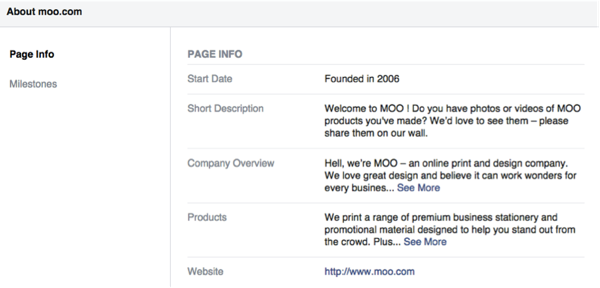Eight steps to getting started with social media
As a small business owner, you need social media to develop your reputation and to grow your business. You need it to help you become part of the conversation on the social web, to hear what’s being said about you and to deal with negative perceptions about your brand. But if you don’t have a social media presence and no one’s talking about you because they don’t even know you exist, then you have no chance for growth. In fact, not having a social media presence can actually harm your business.
So if you want to grow your business online, you need to develop and protect your reputation on social media. But how and where you begin? In this article we’ll help you blast through the most difficult part of social media: getting started.
At the end of the article, you’ll also be able to download our checklist to guide you as you get off the ground in social media.
Here are eight steps to get you started
1. Determine your goals
The first step is to establish the goals that you hope to achieve. So ask yourself why you’re doing it and what you want to get out of your participation on social media.
- Do you want to build brand awareness so more people learn about your business and the products and services you provide?
- Are you looking to generate direct sales?
- Are you trying to provide a better customer service?
- Do you want to build relationships with customers and to boost loyalty?
The answers to these questions will help you to determine the type of content you should publish and the activities you should participate in on social media.
Without setting some goals, you’ll have no means of gauging your success and no means of proving your return on investment. Just make sure not to focus on vanity metrics like number of retweets or likes, and instead focus on relevant metrics like number of leads generated, sentiment or the amount of visitors referred to your website or blog. In addition to that, since you’re just getting started, you should also be realistic about what you can achieve as a beginner.
You can learn more about developing specific goals for social media in this webinar. In it, you will also find more information on how to monitor your goals, allowing you to see whether you are succeeding in your aims.
2. Find out more about your audience
Where do your potential customers spend time online? Which social network has the right demographics? What kind of content engages them and gets them talking? What kind of information are they looking to get from you? What do they like or dislike?
Keep in mind that social media isn’t about blasting marketing messages but about building relationships with your audience. That’s why you need to find out who your audience is and what they want and need so you can then provide the kind of content that they find interesting and useful.
There are a few simple ways to find out more about your audience and what they’re interested in. The first one is to look into your competitors’ social media activities to see what they’re doing online and who is interacting with them on various social networks.
The second one is to reference the audience research and demographics published by SproutSocial. They have complete data of the demographics for Facebook, Twitter, Instagram, Google+, LinkedIn, Pinterest and more.
Here is a side-by-side comparison of Facebook and Twitter demographics:
3. Evaluate your resources
Setting up a social media account may be free but maintaining it is a time-consuming undertaking. So you need to consider the people and the skills you have to work with.
- Who is going to create your content?
- Who is going to manage your social media accounts?
- Who is going to respond to questions and comments, and be the face of your business on social media?
- Do you have the technical skills to design or to install and use various apps?
- If you don’t have the necessary people or skills, are you willing to learn a network’s features and how to do everything yourself?
You need to make sure that you have everything that is needed to execute a social media marketing plan before you start.
4. Choose your social networks
Now it’s time to jump in and choose which social networks best fit your business. The most important advice we can give you is to avoid setting up an account on every social platform. If you’re on six or seven platforms and you can only keep up on or two, that looks bad and it can hurt your online presence. The best approach is to pick one or two, give them all of your attention and manage them properly.
But here’s the question: which ones do you choose? The answer: the ones where your audience is spending time online. You also need to consider which social channel can help you achieve your goals. For example, if you want to provide a better customer service, Twitter might be the best choice for you. If you want to engage with customers and have lots of content from your own blog to share, then you should probably go with Facebook.
Read our post on which social media platform your business should be on to get a better understanding of how some of the most popular social platforms work and which ones to use so they’re worthwhile for you. In it, you’ll find useful information on how major platforms like Facebook, Twitter, Instagram, Pinterest, Google+ and LinkedIn are used, some great examples plus what business goals each platform can help you achieve.
5. Fill out your profiles completely
Take your profile seriously and make sure you fill it out completely with all the relevant information about your business. A completely filled out profile shows professionalism, cohesive branding and it tells your audience that you’re serious about engaging.
A profile on social media, regardless of the platform, consists of two parts: text and visuals. Pay attention to both.
When it comes to text, make sure you answer the most important questions: who you are, how you can help, where you’re located (online and offline) and how people can contact you. In your descriptions, try to be personal and personable, and also as clear as possible so people understand right away what your business is about.
Here’s an example from MOO’s Facebook page, an online print and design company:
When it comes to visuals, aim for consistency and familiarity. Create and use similar images for the covers you’ll be using on Twitter and LinkedIn for example. Here are the cover image sizes for the major social networks:
- Facebook: 828 by 315
- Twitter: 1500 by 500
- LinkedIn: 974 by 300
- Instagram: 1080 by 1080
For more social media image sizes and some good tools to create images that drive engagement read our post on how to use images on social media.
Now that you’ve created your social media accounts, it’s time to start building your online presence through content.
6. Create amazing content
You should already know by now what type of content your audience wants to see, so take the time to create and find that type of content and give it to them. Start with the basic five types of updates we all post: links to your own content or other people’s content, images, quotes, reshares and plain-text updates.
Here are a few things to consider:
- The type of content. You can post photos, videos, infographics, quotes, articles and any other kind of content that you think your audience will enjoy. An interesting fact to keep in mind though is that on Facebook as well as on Twitter photos have a great effect on likes and retweets. Research has shown that using images in status has resulted in an 85% interaction rate on Facebook and increased retweets by 35% on Twitter.
- Finding content to post. There are so many sources. The first ones should be your own site and blog. (Just try to keep self-promotional content on social media at a minimum, otherwise you’ll end up chasing people away.) You should also follow influencers within your industry as well as news site so you can cover any news that’s coming up within your market. Don’t forget to also keep an eye on your competitors to see what they’re sharing on their social channels. Check out these ten tool to find great content to share on social media.
- Deciding when and how often to post. There is so much interesting data out there about how often to post to social media. But the truth is that you need to figure out what works best for you industry and your audience. You can always change your strategy if for example people love your updates, encouraging you to post more. Check out this social media frequency guide that shares some great insights into how often you should post to Facebook, Twitter, LinkedIn and more.
Keep in mind though that content also comes in the form of conversations. You need to continually offer your audience amazing content that gets them talking. It’s the only way to build a loyal following of people who trust you as a reliable source of information.
7. Create an editorial calendar
Whatever type of content you choose to share, whether it’s videos, images or articles, you need to create a social media calendar where you decide what to post, when and where.
Your calendar should include things like:
- The type of content you intend to post
- What time and day it will be posted
- The audience you’re targeting
Create the calendar and then schedule your updates in advance rather than updating constantly throughout the day. Tools like Buffer, Hootsuite and TweetDeck are a time-saver when it comes to scheduling content in advance for social networks like Twitter, Facebook, Google +, LinkedIn, YouTube and more.
So research and gather great content from your own blog as well as from authority sites that you’re following, and add everything to your calendar in a simple Excel spreadsheet. Then simply schedule it using one of the tools we mentioned.
8. Evaluate and adjust your social media plan
Your job doesn’t end after you’ve posted your content, though. You also need to measure the success of your efforts and adjust your strategy. That’s because the more content you post, the more you’ll discover what kind of content, timing and frequency work best for you and your audience.
How will you know? Most social network have a basic analytics built into the platform where you can find some good information about how well your audience is reacting to your content. Take our free course on getting the right results from social media to make sure you’re not wasting your time on social media.
You should constantly review this information so you can figure out what’s working and what needs to be improved.
The last piece of advice we can give you is to never stop listening and learning. If you want to be successful on social media, you need to be flexible and to adapt your strategy to what’s trending.
Your social media checklist
You can download your social media checklist here. Make sure to have it with you to guide you as you get off the ground in social media.
Wrapping up
Getting started with social media for your small business isn’t easy. It may look overwhelming and thrilling at the same time but if you follow these steps, you’ll find it much easier to get started since you know what lies ahead.
What do you think is the most difficult part about getting started with social media?


